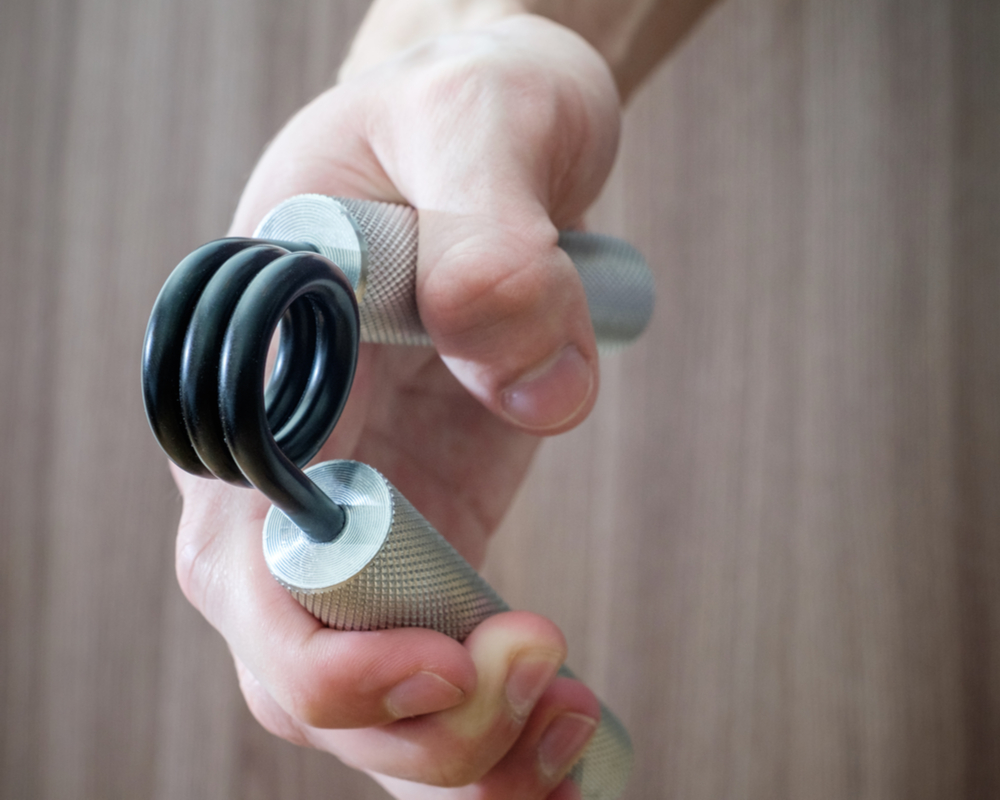Research Review: Linking Hand Grip Strength and Cognitive Impairment

McGrath R, et al. (2019) The Longitudinal Associations of Handgrip Strength and Cognitive Function in Aging Americans. J Am Med Dir Assoc Nov 6. pii: S1525-8610(19)30649-8. doi: 10.1016/j.jamda.2019.08.032. [Epub ahead of print]
Introduction
While muscle weakness associates with a variety of poor health outcomes including morbidity, functional limitations, and early mortality, emerging evidence suggests that muscle weakness may also associate with diminished neural system functioning and cognitive disfunction. Therefore, it can be hypothesized that the same age-related neuro- degeneration that contributes to decreased overall muscular strength motor skill function, as measured by handgrip strength (HGS), may also be linked to cognitive impairment.
Purpose
This research sought to examine the longitudinal, directional associations of overall muscular strength, as measured by handgrip strength (HGS) and cognitive function in a national sample of aging Americans.
Methodology
This study utilized data from 28,980 adults aged at least 50 years who completed interviews from the 2006‒2016 Health and Retirement Study (HRS), a continual longitudinal-panel study that monitors the health and financial status of aging Americans. Publicly available HRS data files were joined with the HRS dataset. The HRS is. Participants were interviewed biennially and followed until mortality.
The major independent variable was preferred handgrip strength measured with the arm was at the side and elbow flexed to 90°. Also age, sex, race and ethnicity (black, Hispanic, and white indicators), height, and body mass were also recorded. The major dependent variable was cognitive functioning, assessed using the Telephone Interview of Cognitive Status screening tool designed for population-based studies. This test includes immediate and delayed word recall, a serial sevens subtraction test, and counting backward for 10 consecutive numbers at maximal speed. Cognitive status was categorized as mild or severe, or those having any cognitive impairment.
Results
There were 14,775 participants included in the analyses the overall time to follow-up was 2.1±0.4 yrs. The principal results revealed that every 5 kg higher HGS associated with a 3% decreased odds for future cognitive impairment and worsening cognitive impairment. Older Americans who were not weak had 46% decreased odds for future cognitive impairment and 43% decreased odds for subsequent worse cognitive impairment. Conversely, cognitive impairment predicted a 1.09 kg decrease in HGS; whereas, mild and severe cognitive impairment predicted a 0.85- and 2.34-kg decrease in HGS, respectively. Further, any, mild, and severe cognitive impairment was associated with 82%, 65%, and 153% increased odds for subsequent weakness, respectively. These findings support a “common cause hypothesis,” that suggests common factors are responsible for age-related deterioration of noncognitive and cognitive processes.
Key Findings
This research reveals a bidirectional association between HGS and cognitive function in a national sample of aging Americans. These findings indicate that strength capacity and cognitive function may parallel each other, such that losses of functioning in one may predict losses of functioning in the other. The data suggest that muscular and neural systems that link HGS and cognitive function share a common cause.
Conclusions
Healthcare providers should use measures of HGS in clinical and epidemiologic settings to predict cognitive impairment risk in their aging adult patients, and for monitoring strength capacity in those with a cognitive impairment.